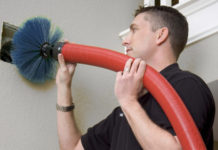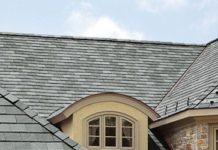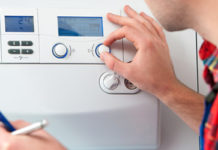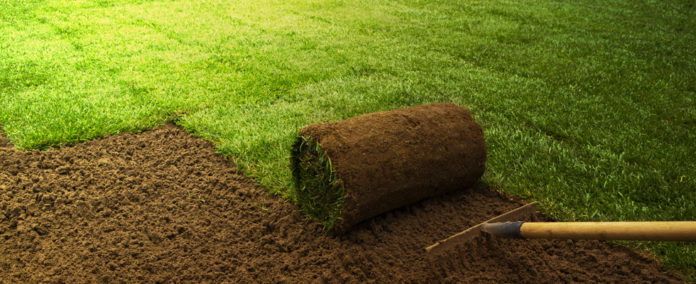Ballpark estimate: 30 to 80+ cents a square foot installed
If you desire a lush lawn but don’t want to put in the work or time involved to grow it yourself, you may want to consider investing in the cost of grass sod. In return for the expense, you’ll increase your home’s curb appeal by achieving the look of a mature lawn without the wait. This may even give your property value an added boost.
What is Sod?
Grass sod is mature grass that can be placed on top of soil, where it can take root and thrive. It’s a lot more expensive to go the sod route than to plant grass seeds and wait for the grass to grow, but the expense can be well worth it in when you consider that when you go with sod, you can have the lawn of your dreams immediately. This makes sod an ideal option for a new home, as well as an appealing choice to use to replace areas of a mature lawn that have been damaged by weather conditions or construction.
The Logistics of Sod
Once you purchase sod grass, you’ll need to have it installed. It usually comes in a roll or pallet (like a carpet) and can be unfolded and placed right on top your soil, where within about a month it becomes permanently affixed. In addition to being aesthetically pleasing, sod also protects your soil from eroding. Just keep in mind that while sod looks good immediately, it does require some preparation to the soil in advance, as well as some maintenance (such as irrigation and fertilizing) once it’s been installed to properly maintain the effect.
Different Types of Sod
Sod comes in different types and price ranges. The most common types include St. Augustine, Bermuda, Zoysia, and Fescue. When selecting the best sod for your situation, the experts say a good rule of thumb is to look for grasses that are common in your area, since those will likely do the best with your local weather conditions. Some people prefer to look for a sod that consists of several grass types, in order to get a hearty mix.
You’ll also want to consider the quality of the sod you buy, since some of the most economical sods will be lower grade, which means that they might not be as healthy as a higher—and more expensive—selection. Therefore, you’ll have to weigh out the cost versus the risk involved if the sod becomes diseased and doesn’t thrive.
Where to Find
To find sod, you can look to a local landscaper, garden shop, or home improvement store like Lowes or Home Depot. You can also do a search online for a farmer in your area who sells sod grass or use an online searchable directory, such as one offered through Sod Solutions. In addition, you can order sod online. The latter may seem like an economical choice, since you may be able to find some bargains over the Internet, but if you need to pay for shipping, it could end up costing more than you expect to go this route since sod is quite heavy. In addition, when you order online you won’t see what you’re getting in advance, so you could be disappointed when it arrives. Another thing to keep in mind is that for best results, sod should be freshly cut right before it’s installed, so if it’s coming from outside of your area, you’ll want to be sure it stays fresh during the transport.
Factors Affecting Sod Cost
When shopping for sod, there are a number of details that can affect the overall price. For instance, the type of grass in the sod is an important factor, as well as where you buy it, the cost involved to deliver it to your home, and the installation process. Therefore, when comparison shopping for sod, it’s essential to find out is the price includes delivery and installation, since both can jack up the price considerably. If you’re getting an estimate for sod installation, keep in mind that how large your yard is and how level it is can also impact the amount of work involved to lay this product. The installation process itself can also impact the cost of sod, since a landscaping company with professional equipment can get the job done a lot more quickly than an individual who is placing the sod by hand Therefore, although a larger company may change more than a small local grower for the sod itself, but when you factor in the installation costs, the company could end up being more economical in the end. If you have challenging yard conditions that wouldn’t be conducive to installing the sod by machine, you can also expect to pay more for the labor.
The Cost of Sod
If you plan to have the sod professionally installed, the cost of the sod can start at about 14-cents a square foot for the lowest grade or quality sod installed, while a good quality sod can run about 80-cents a square foot installed.
For a 2,000 square foot yard, this means that the price for the sod starts at $300 and goes up $1,600 to have it installed. You can find lots of options in-between these two extremes, depending on your budget and how high quality a product you want.
If you prefer to install it yourself, you can save 50 percent or more on the job. This means a DIY option for the same 2,000 square foot yard might cost $150 to $800 for the sod product itself, plus any expenses you incur with the labor or preparation involved.
A Word of Warning
If you’re considering installing sod yourself to save on costs, keep in mind that the process can be labor intensive, especially when it comes to preparing your land and ensuring the soil condition is ideal. In addition, matching up seams of the sod strips and ensuring it lays evenly can be challenging for an amateur, so when you weigh all of these factors, the cost savings may not seem as appealing.














































